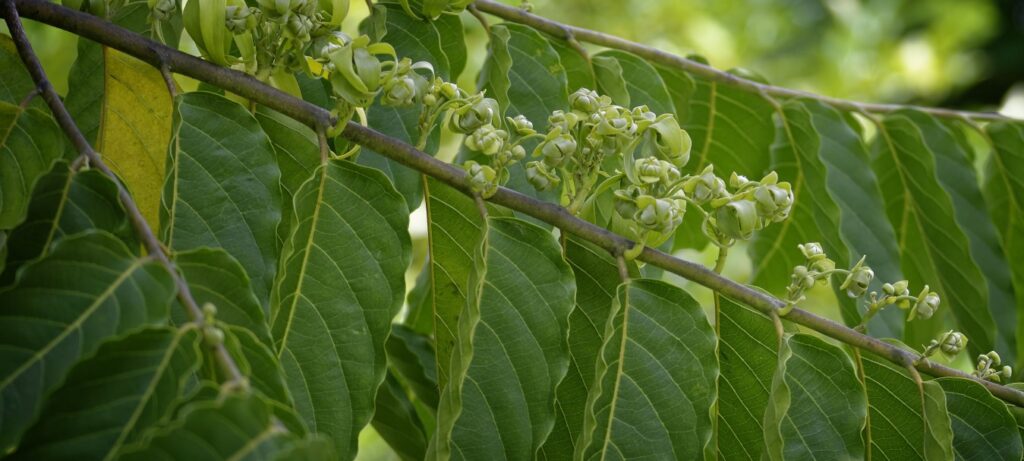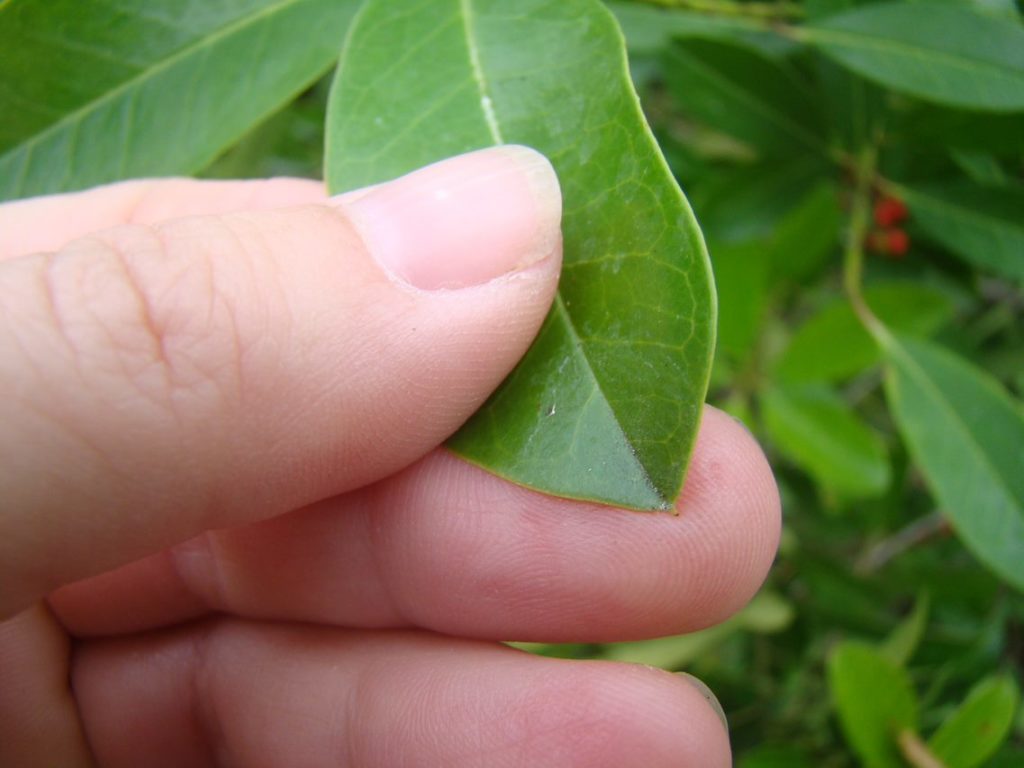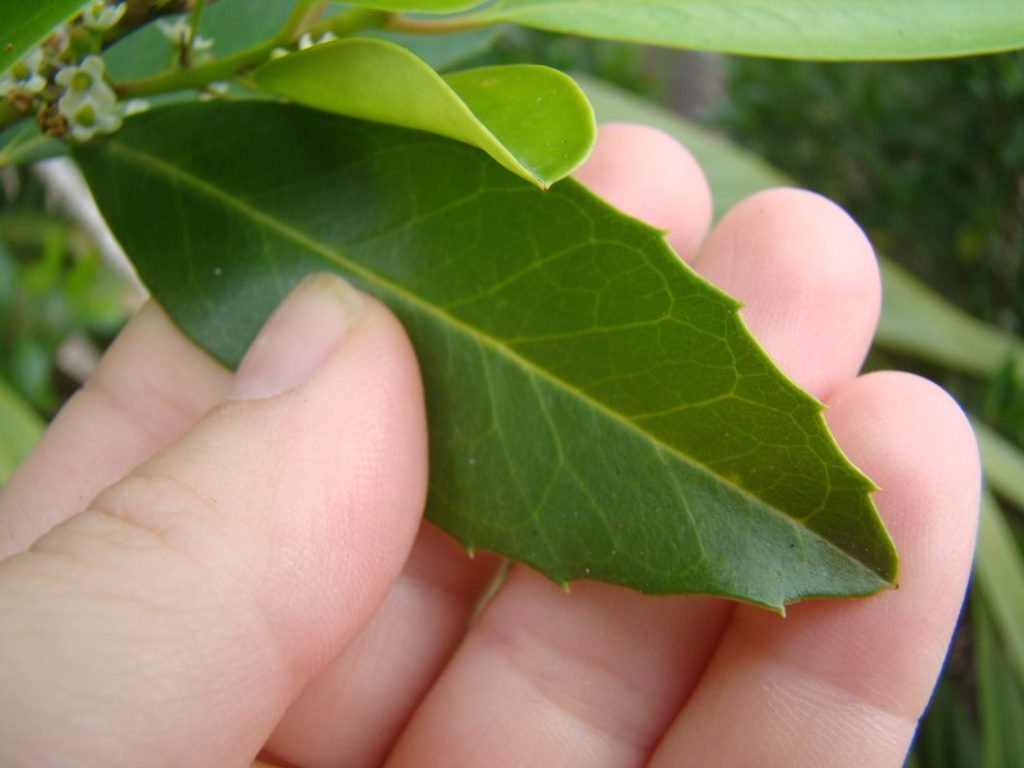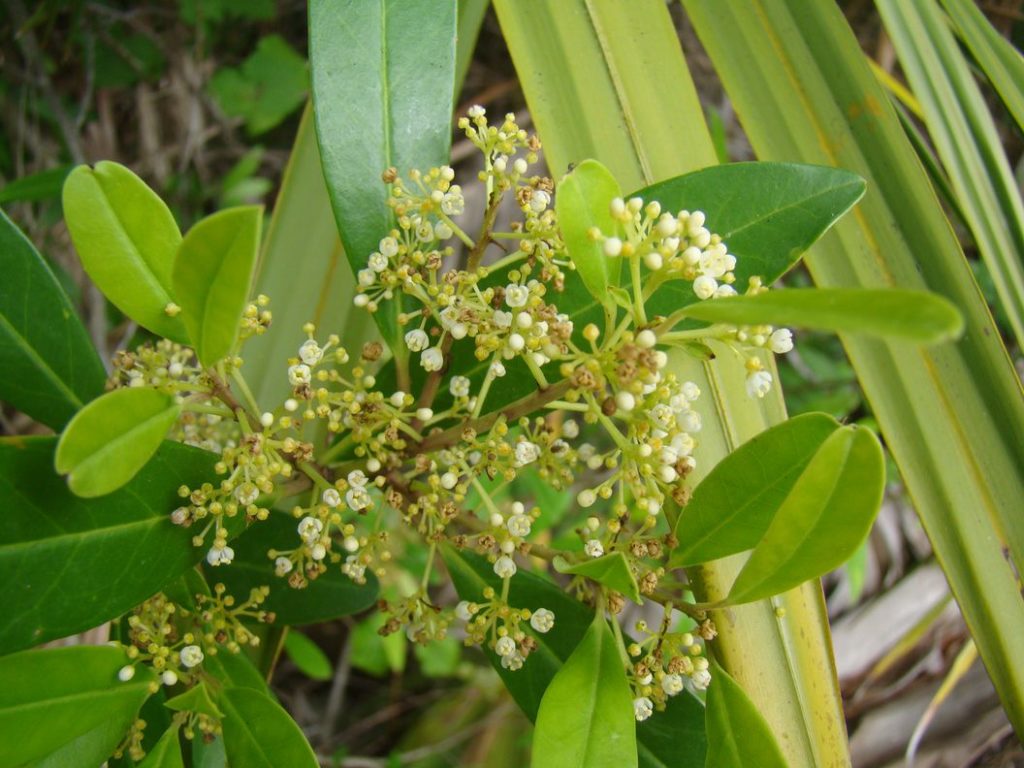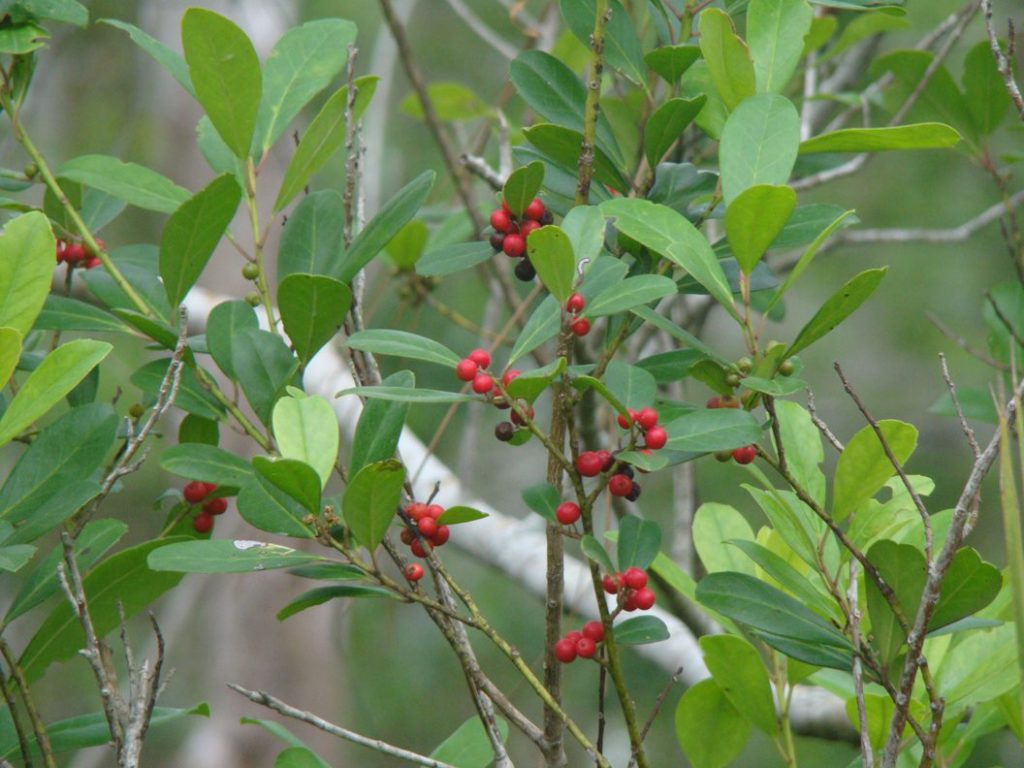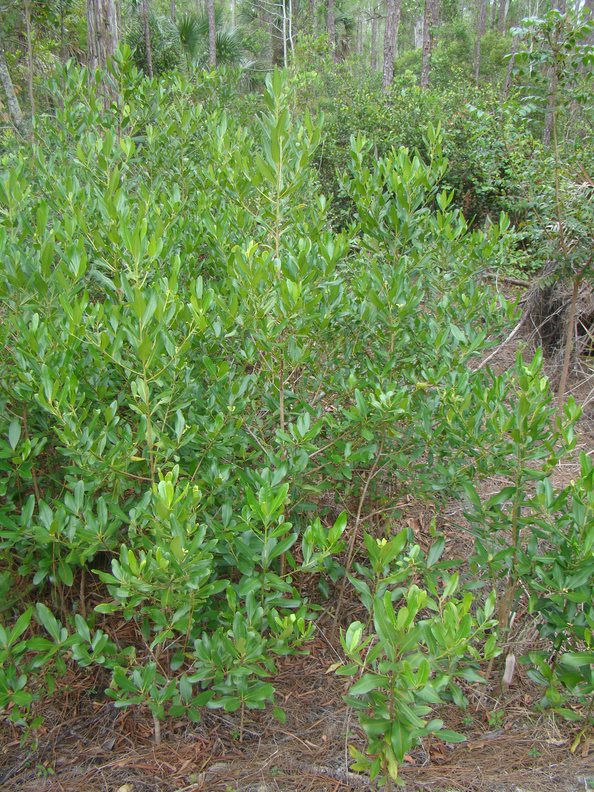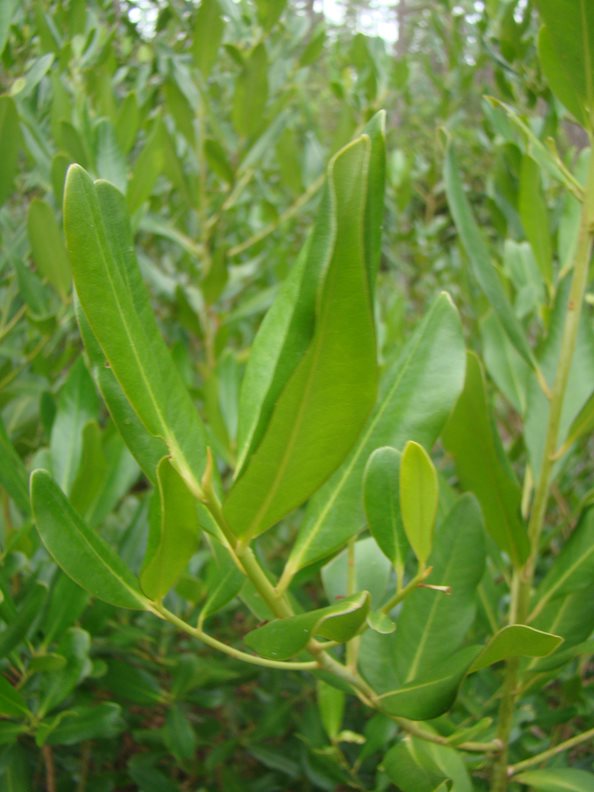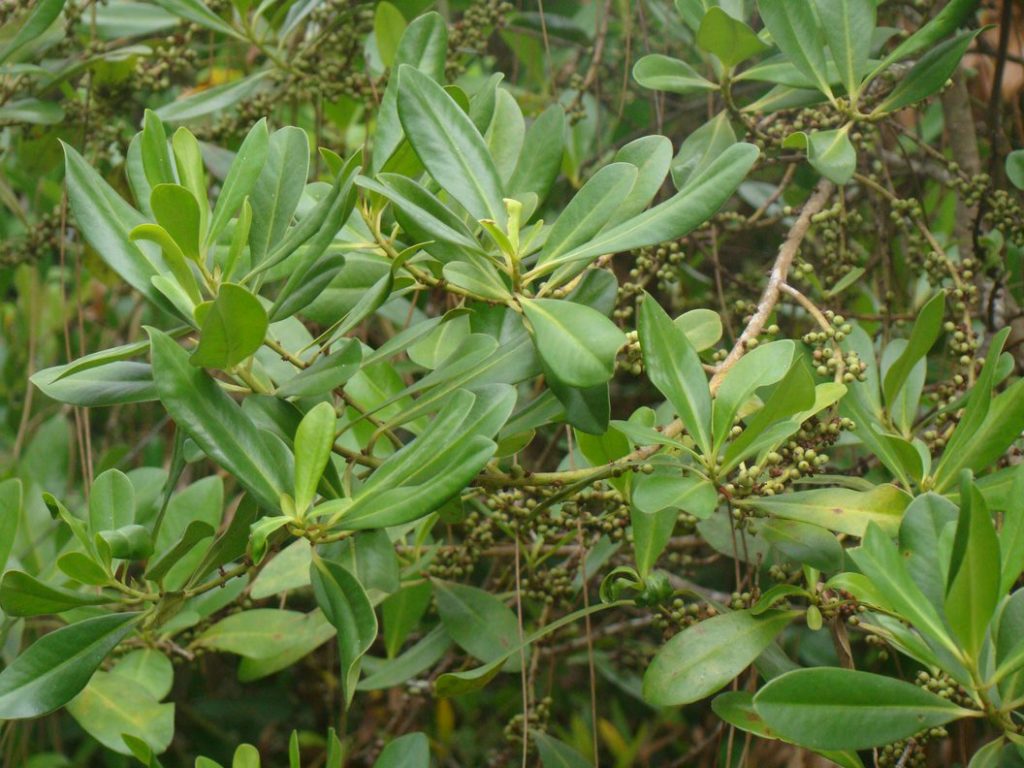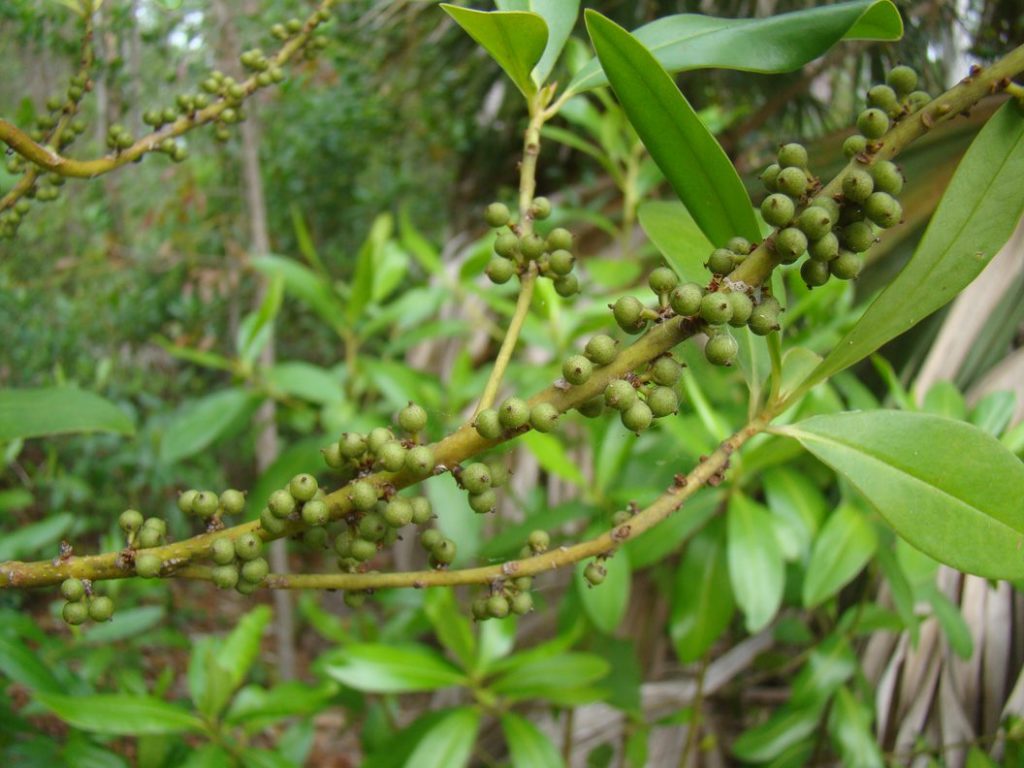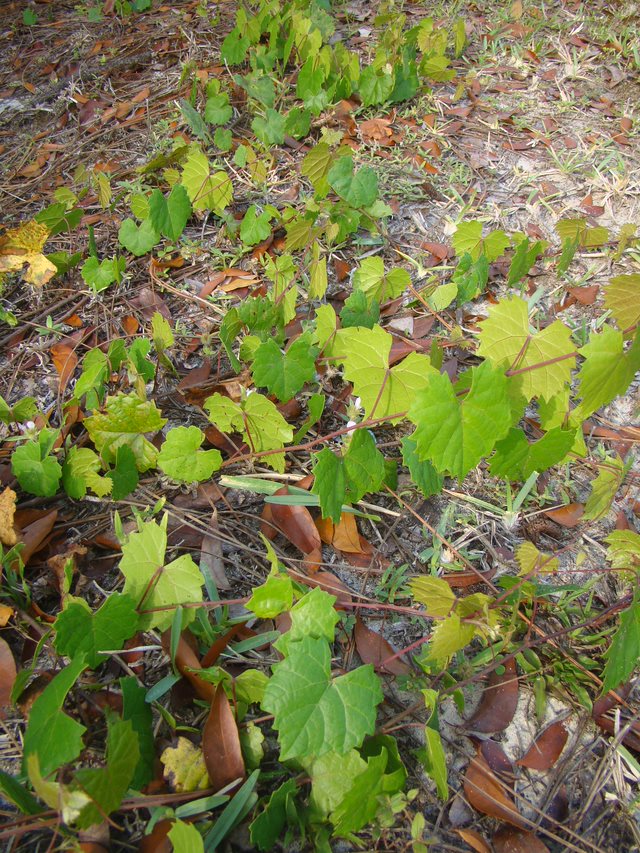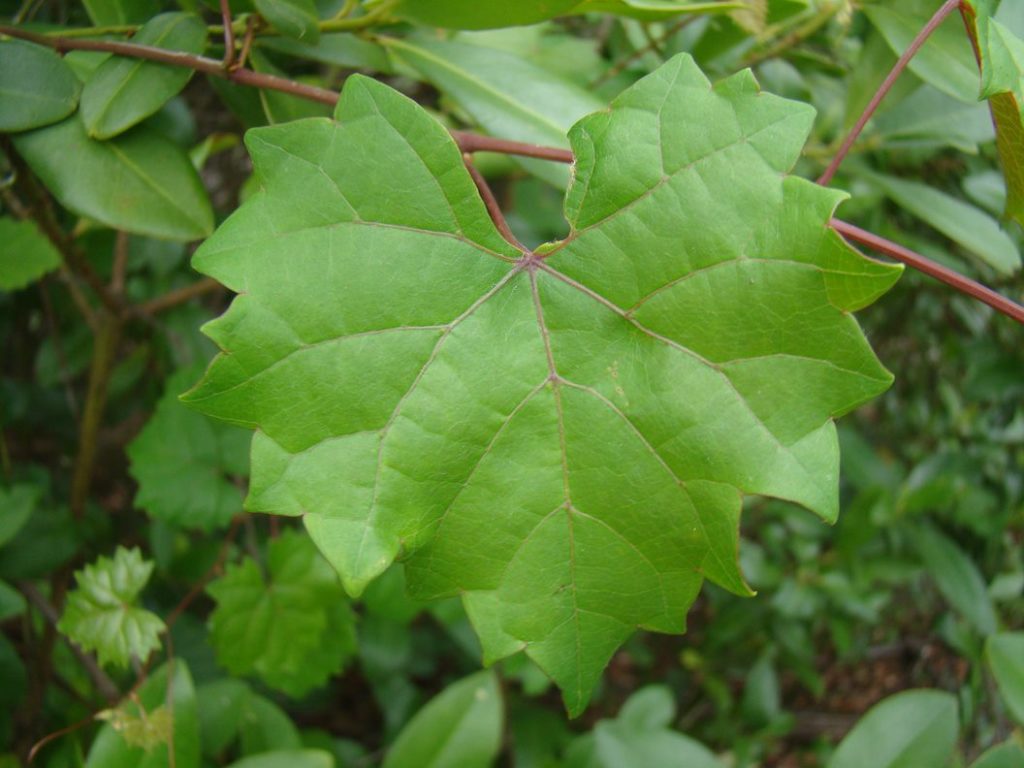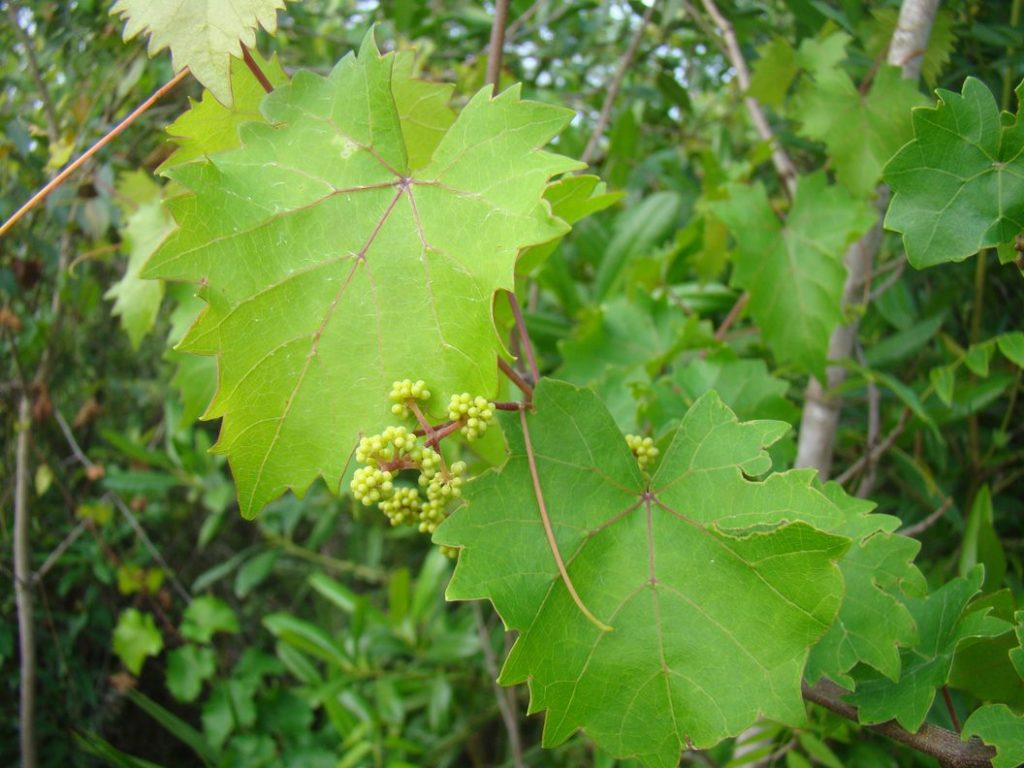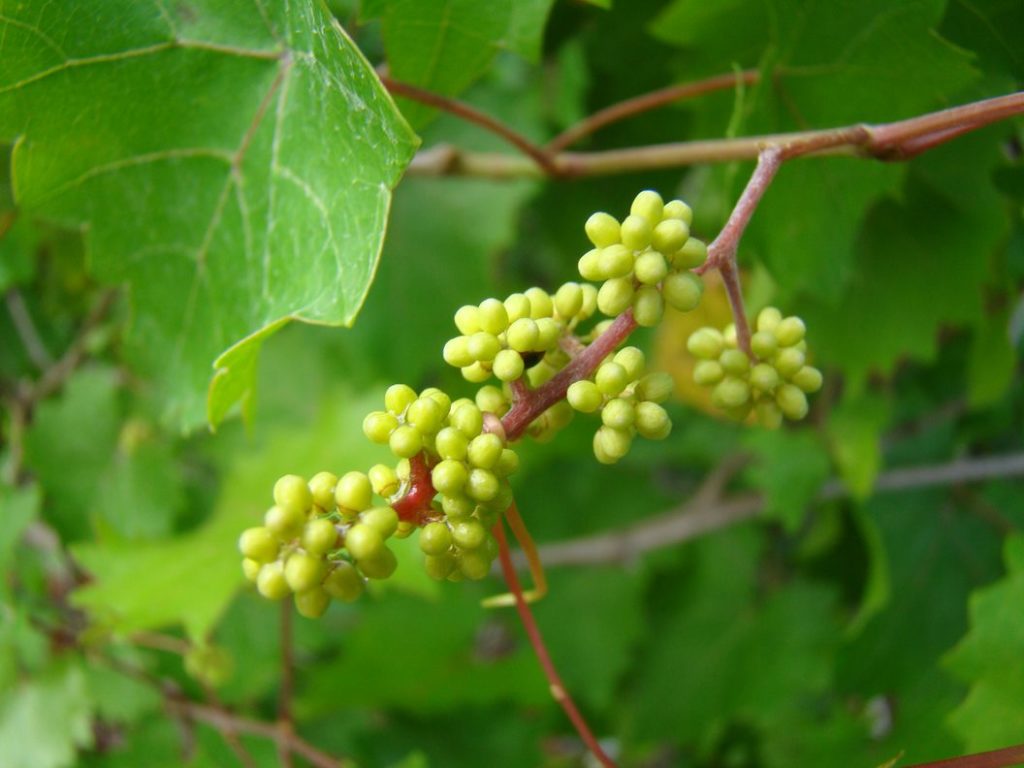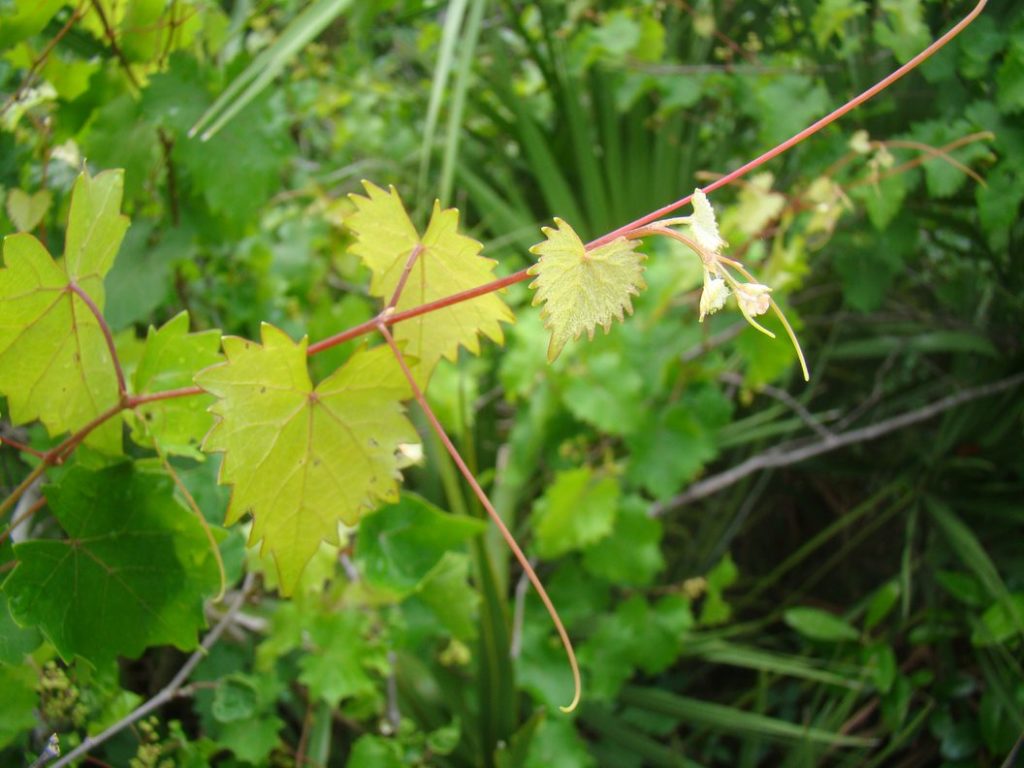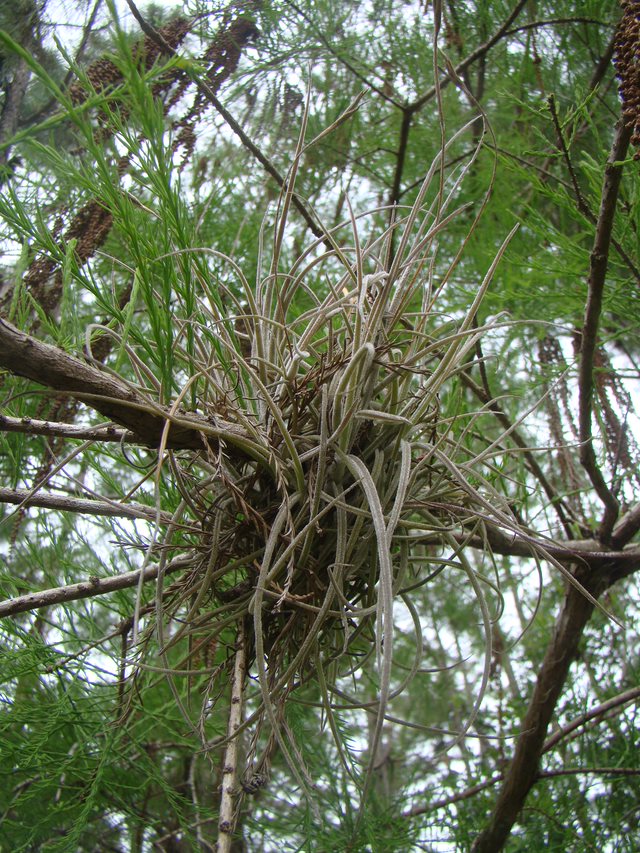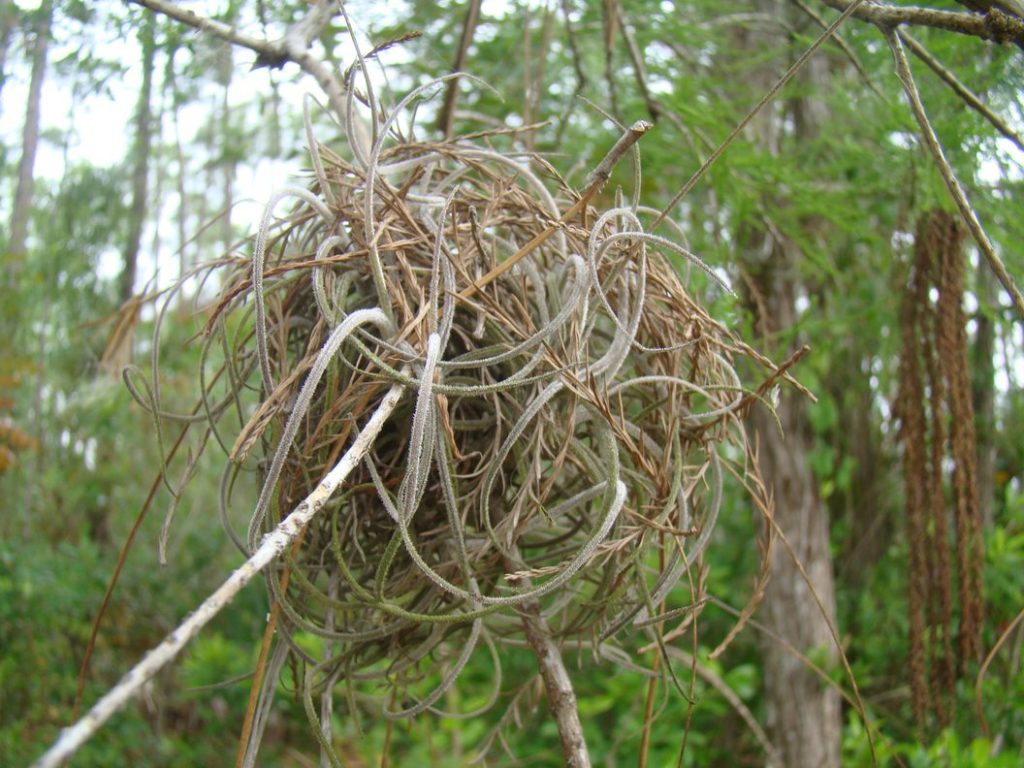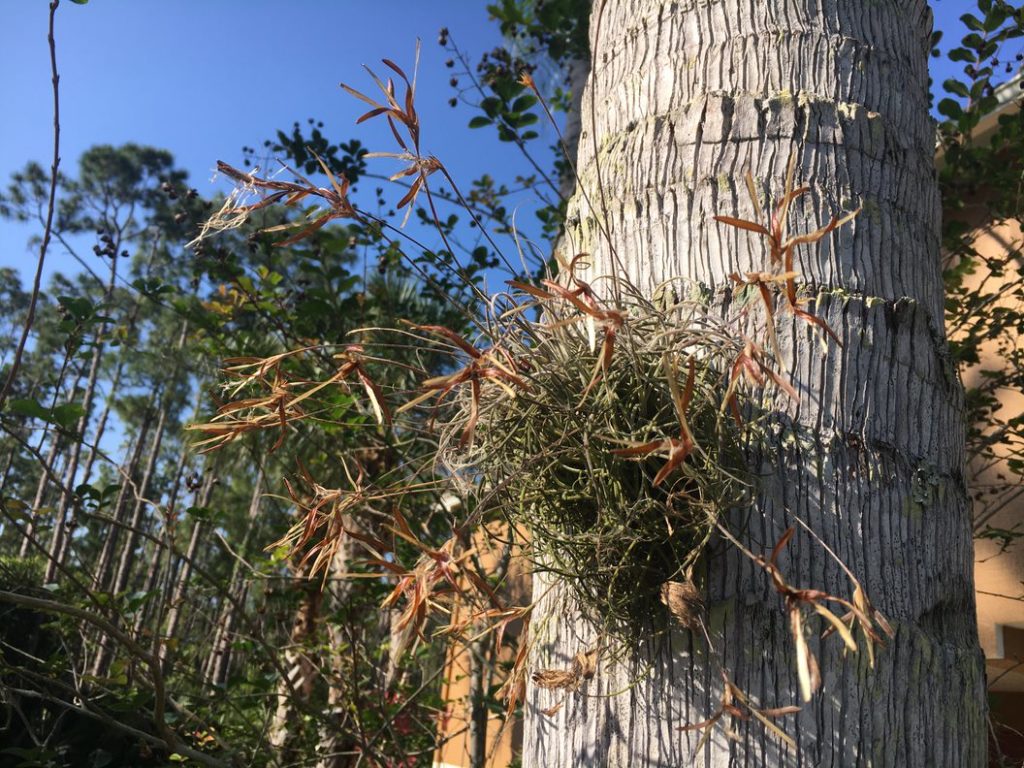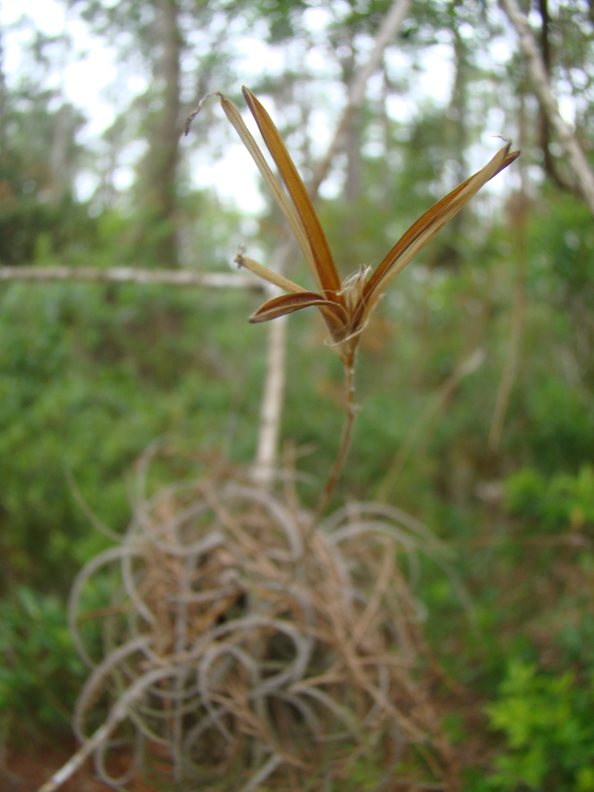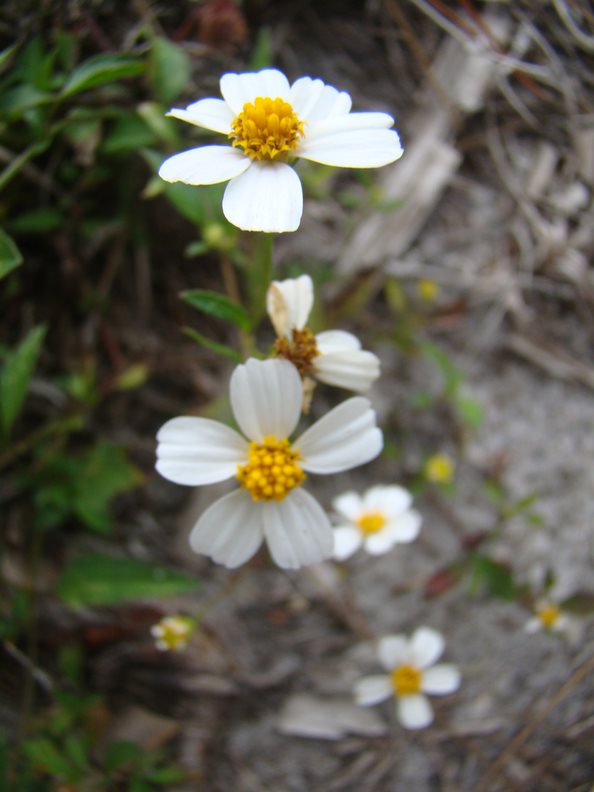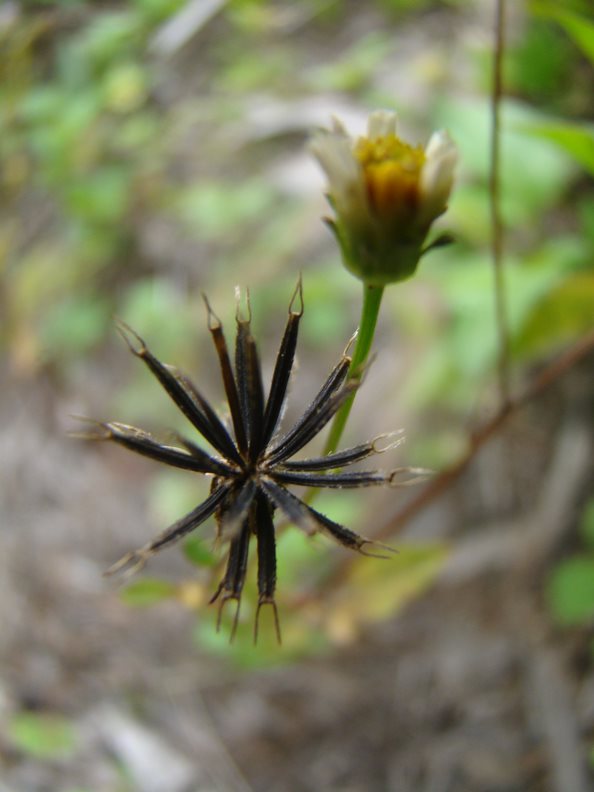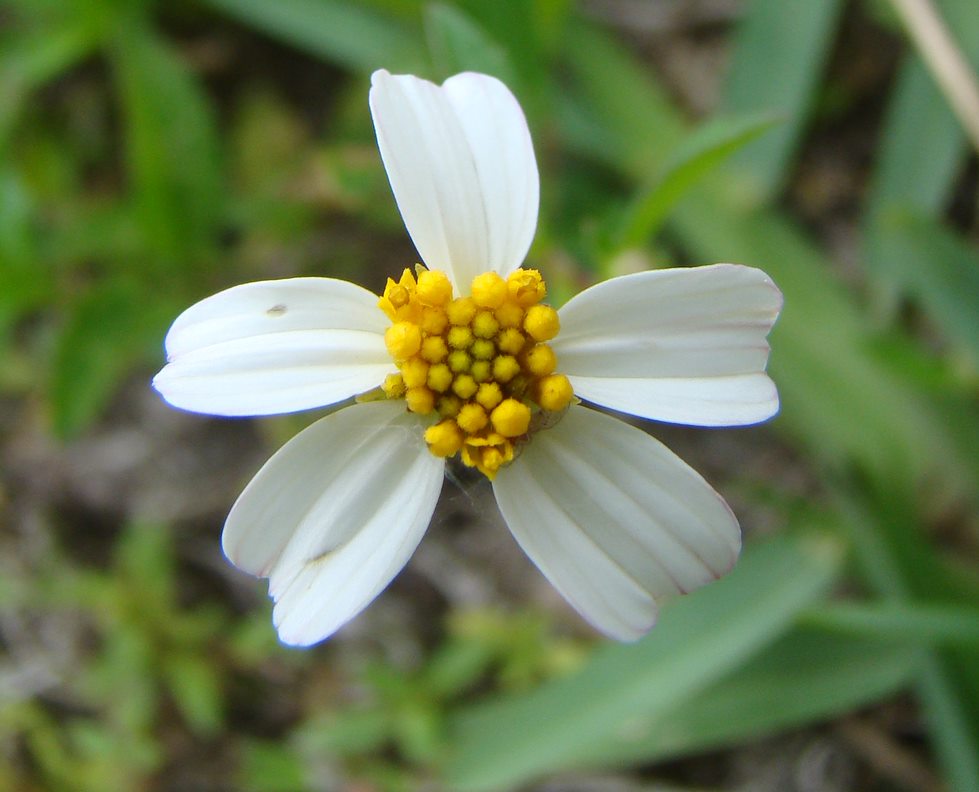Florida’s native plants are all around us. A quick look at the plants in your community’s green space or along your favorite bike path may reveal a number of native species. The five Florida native plants described here are commonly seen in residential areas of Southwest Florida. Unique characteristics related to growth habit, leaves, flowers, fruits, and/or seeds are provided to help you recognize these plants on your next neighborhood stroll.
Tip: Plants of the same species may not all look the same. One specimen may be in flower while another may be in fruit, on the same day! Plants illustrated here were photographed in Naples on April 11, 2020.
Plant Name: Dahoon Holly (Ilex cassine)
Growth Habit: Tree
Distinguishing Features: Evergreen leaves with very pointed tips. Some leaves may be serrated towards the leaf tip. Clusters of small white flowers or round, green-red fruits.
Where to Look: Edges of wetlands or other moist conservation areas
Comments: Only female dahoon holly trees produce fruit, but you can find flowers on both male and female trees. Dahoon holly is sometimes confused with Brazilian pepper (Schinus terebinthifolia), an invasive plant that produces similar fruits. One of the simplest ways to tell them apart is to check the leaf tip. If the leaf tip is very pointed, then it is the dahoon holly. Also, Brazilian pepper tends to grow as a densely tangled, leggy shrub rather than as a tree with a vertical trunk. Brazilian pepper belongs to the poison ivy family (Anacardiaceae), and some people have allergic reactions after contact with the leaves or sap.
Plant Name: Myrsine (Myrsine cubana)
Growth Habit: Shrub
Distinguishing Features: Younger stems are typically held upright, giving this shrub a relatively narrow profile. Waxy leaves tend to curl under along the edges. Small, white flowers appear on the long stems that support the leaves. On female plants, green-black fruits develop after flowers finish blooming.
Where to Look: Edges of pine woods, upland hammocks, or shady coastal habitats
Comments: Botanists use the term “revolute” when leaf margins roll to the underside of the leaf. Myrsine’s tendency to make thickets provides great cover for small animals. When ripe, myrsine’s fruits attract many fruit-eating birds, such as red-bellied woodpeckers.
Plant Name: Muscadine (Vitis rotundifolia)
Growth Habit: Vine
Distinguishing Features: Heart-shaped leaves with coarsely serrated edges and reddish veins. Clusters of small, green flowers followed by tiny green grapes. Grapes grow to about the size of a marble and ripen to dark purple.
Where to Look: Almost anywhere! Scrambling along the ground or climbing up trees or other structures.
Comments: Muscadine belongs to the grape family (Vitaceae). One way to confirm that a vine is a member of the grape family is to look at the location of the tendrils. Grapes possess leaf-opposed tendrils, meaning each tendril appears directly opposite a leaf (photo 5). Muscadine was the first native grape grown for consumption in the United States. The grapes take about four months to ripen and can be used to make jelly, juice, and wine.
Plant Name: Ball Moss (Tillandsia recurvata)
Growth Habit: Epiphyte
Distinguishing Features: Gray-green leaves are long, narrow, and slightly fuzzy. Tiny, blue-violet flowers appear on separate stems that grow away from the leaves. Flowers transition to seed capsules. Seeds are attached to fluffy material, and float on the wind.
Where to Look: Tree trunks or branches; sometimes grows on utility lines or wire fences
Comments: An epiphyte is a plant that grows on another plant for structural support. Ball moss looks a lot like Spanish moss (Tillandsia usneoides); however, ball moss grows in a tight cluster rather than in long cascades. Neither plant is actually a true moss. Both plants belong to the bromeliad family (Bromeliaceae) and are related to pineapples. Ball moss absorbs rainwater through special scales on its leaves.
Plant Name: Spanish needles (Bidens alba)
Growth Habit: Herbaceous wildflower
Distinguishing Features: Nickel-sized, white-and-yellow flowers. Distinctive, two-pronged black seeds.
Where to Look: Almost anywhere! Residential yards, vacant lots, and trail edges.
Comments: Spanish needles belongs to the aster family (Asteraceae). Like many other asters, the “flower” of Spanish needles is actually made of many “florets” of two different types. The white “petals” are called ray florets, and the central yellow structures are called disc florets. The first word of the scientific name (Bidens) refers to the two teeth (bi = two; dens = teeth) that help the seeds stick to animals’ fur (or people’s socks). This is an exceptional pollinator plant. Dozens of butterfly and bee species have been observed visiting Spanish needles.

